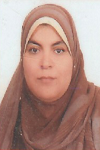Day 2 :
Keynote Forum
Anil K. Mandal
University of Florida, USA
Keynote: Diagnosis and management of Diabetes and relationship of d-glucose to preservation of kidney function
Time : 09:30-10:10

Biography:
Dr. Anil K. Mandal is a native of India and a naturalized citizen of the United States. He graduated from Calcutta National Medical College and is a diplomaye of American Board of Internal Medicine. He is the author of many books and articles on research in diabetes and kidney disease. He is two-time Fulbright Scholar to India and Visiting Professor to 24 countries where he has lectured on diabetes, high blood pressure and kidney disease, Dr. Mandal began the Diabetes Research Foundation for the prevention and treatment of diabetes based on his knowledge that diabetes is the most common cause of kidney failure worldwide. Dr. Mandal’s conviction are in office, patients come first and in the home, children comes first. He is dedicated to helping diabetic patients live a good life and not enter dialysis.rn
Abstract:
We previously reported that dglucose is a strong predictor of renal function change in diabetes. This study is an expansion of a previous study but with longer duration. Eighty five diabetic patients were treated with a combination of glargine or detemir and regular insulin for 26.3 ± 24.6 (SD) months. Blood pressure was controlled by beta blockers, calcium channel blockers, sympathetic inhibitorsor a combination, and chlorthalidone in resistant cases. Angiotensin converting enzyme inhibitors and receptors blockers (ACEI/ARB) were excluded. Objectives were to determine if this paradigm of treatment prevents progression of diabetic nephropathy. Fasting (F) and 2-hour postprandial (2hPP), glucose, serum creatinine (Scr) and estimated glomerular filtration rate (eGFR);hemoglobin A1c(HbA1c); and sitting systolic and diastolic blood pressure (SBP) were recorded for first and last visits. Mean blood pressure (MBP) and differences (d, 2hPP-F) were calculated for glucose, Scr, and eGFR. Parameters between first and last visits were compared using a paired t-test adjusted for age, gender and duration of treatment with P<0.05 considered significant. No significant differences were found between first and last treatments for F and 2hPP glucose, F and 2hPP Scr, and F and 2hPP eGFR, and HbA1c.Dglucose, sitting SBP and MBP were significantly lower at last compared to first visit. Combining both visits, dglucose showed a direct and positive correlation with dScr. In conclusion the current study reinforces the importance of control of dglucose (2hPP-F) with insulin and exclusion of ACEI/ARB in achieving renal preservation in diabetes.
Keynote Forum
Christain Dani
French National Institute for Health and Medical Research, France
Keynote: Human adipocyte progenitors: Proliferation and differentiation in the obesity context
Time : 10:10-10:50

Biography:
Dr. Christian Dani, Ph.D, is an expert in human adipose-derived stem cells and differentiation of pluripotent stem cells into adipocytes. He did a Ph.D in molecular biology in Montpellier University (France). Then, he conducted a 2-year program research on the biology of embryonic stem cells in Pr. A. Smith’s laboratory (Edindurgh, Scotland). He is now director of research at the French National Institute for Health and Medical Research (INSERM) and the director the “Stem Cells and Differentiation” laboratory at the University of Nice-Sophia Antipolis.
Abstract:
Adipose tissue expansion is well-orchestrated to fulfill the energy demand. A pool of adipocyte progenitors (APs) isrnresponsible for the formation of new adipocytes and for the potential of this tissue to expand in response to chronic energyrnoverload. However, molecular mechanisms controlling proliferation and differentiation of human APs are largely unknown. Chronic low grade inflammation and hypoxia take place in obese and diabetic adipose tissue microenvironment. We willrndiscuss the role playing by the TGFb family members in human adipogenesis. We will show that macrophages that are locatedrnin obese adipose tissues regulate AP self renewal through activin A. The immediate early response 3 gene (IER3) is required forrnAP proliferation and differentiation and IER3 expression is a common target of activin A and hypoxia. Altogether, we proposerna model in which changes in the obese adipose tissue lead to expansion through activin A and IER3 that are potential targetsrnfor controlling the size of AP pool in adipose tissue.
- Diabetic Cure and Diagnosis
Diabetes Research In Clinical Practice
Islet Transplantation and Beta Cell Targeting
Advanced Medications for Diabetes Complications
Session Introduction
Christain Dani
French National Institute for Health and Medical Research, France
Title: Human Induced Pluripotent Stem cells: A new source for brown and white adipocytes
Time : 12:10-12:35

Biography:
Dr. Christian Dani, Ph.D, is an expert in human adipose-derived stem cells and differentiation of pluripotent stem cells into adipocytes. He did a Ph.D in molecular biology in Montpellier University (France). Then, he conducted a 2-year program research on the biology of embryonic stem cells in Pr. A. Smith’s laboratory (Edindurgh, Scotland). He is now director of research at the French National Institute for Health and Medical Research (INSERM) and the director the “Stem Cells and Differentiation” laboratory at the University of Nice-Sophia Antipolis.
Abstract:
Mesenchymal Stem Cells (MSCs) derived from human induced Pluripotent Stem Cells (hiPSCs) provide a novel source for generating adipocytes, thus opening new avenues for fundamental research and clinical medicine. We present the adipogenic potential of hiPSCs and the various methods to derive hiPSC-MSCs. We discuss the main characteristic of hiPSC-MSCs, which is their low adipogenic capacity as compared to adult-MSCs. Finally, we propose several hypotheses to explain this feature, underlying a potential critical role of the micro-environment. We favor the hypothesis that the range of factors or culture conditions required to induce adipocyte differentiation of MSCs derived from adult tissues and from embryonic-like cells could differ.
Wan Keung R Wong
Hong Kong University of Science and Technology, Hong Kong
Title: Recombinant production of human skin growth factors for effective treatments for hard-to-heal wounds
Time : 12:35-13:00

Biography:
Wan Keung R Wong graduated from UBC in 1986 and worked first as Postdoctoral Fellow and subsequently as Research Scientist at Allelix Biopharmaceuticals for four years, joined Hong Kong University of Science and Technology (HKUST) in 1990 and is currently appointed as Associate Professor of Division of Life Science at HKUST. Concurrently, he serves as Chairman of Gene-vinate Limited, which was founded in October 2006 and is currently a member/company of the HKUST Entrepreneurship Program. He has been involved in both basic and applied research activities in the field of Biotechnology. His expertise lies in molecular biology, development of microbial expression systems, and cost-effective production of recombinant proteins for commercial applications. He was a pioneer in the development of novel Escherichia coli excretion and intein-mediated expression systems for efficient expression of valuable proteins, e.g. human epidermal growth factor (EGF) and basic fibroblast growth factor (bFGF). These factors have been employed by WK’s team as active ingredients in skincare products for applications. For example, EGF has been used to effectively treat hard-to-heal wounds including diabetic foot ulcers, bedsores and others. In addition to publishing these important results in the June 2003 issue of Diabetes Care, a PCT patent, covering USA, PRC, Taiwan, Europe, and Hong Kong has been granted for these novel findings. Under the leadership of WK, GVN has developed many lines of healthcare and cosmetic products for commercial applications. Because of his enthusiasm in biotechnological R&D, and commercialization of the resulting outputs, WK has recently been nominated by China Daily as one of the world’s 80 eminent Chinese entrepreneurs in 2014. In addition, GVN has recently been elected by Mediazone Group as the most innovative Biotechnology Group in Hong Kong in 2015.
Abstract:
An estimated population of 400 million people is currently afflicted with diabetes mellitus (DM) worldwide. Among DM patients, 15% of them will develop a foot ulcer, which is a major complication of DM, and 15% of the patients with DM foot ulcers will require amputations. Consequently, DM patients account for half of the non-traumatic lower-limb amputations. The cost of diabetic foot care is unbelievably high; for example, an estimated cost of non-operative care of a single foot ulcer could be as high as US$ 7,000. In view of the difficulties and expensive costs of treating DM foot ulcers, in 2003, our team made use of recombinant human epidermal growth factor (EGF), which was produced using our proprietary Escherichia coli excretion system, and conducted a double-blind randomized controlled study to investigate the efficacy of EGF in treating DM ulcers. The results revealed that EGF was highly effective in the treatments, with a high healing efficiency of 95% within a median time of six weeks, in comparison with 42.1% for non-EGF treatment over a period of 12 weeks. Our findings were reported in the June 2003 issue of Diabetes Care, and a PCT patent for the findings was granted in USA, China, Taiwan, Europe and Hong Kong. In this presentation, efficient expression systems, which have been employed to produce EGF and another important skin growth factor, human basic fibroblast growth factor (bFGF), will be introduced. The important properties of EGF and bFGF required to exert their bio-activities will also be discussed. Both EGF and bFGF may prove to be invaluable means exploited for cost-effective treatments of DM foot ulcers in the future.
Khalid Alnemer
AL-Imam University, Saudi Arabia
Title: Impact of Diabetes on hospital adverse cardiovascular outcomes in Acute Coronary Syndrome patients: Data from the Saudi project of Acute Coronary events
Time : 13:40-14:05

Biography:
Khalid Alnemer did his MBBS, from King Saud University, Riyadh, and then internal medicine, interventional cardiology, nuclear and cardiac CT at McMaster University School of Medicine, Hamilton Ontario. He is the vice dean of medicine college, advisor for Saudi FDA. He has published more than 20 papers in reputed journals and serving as an Editorial Board Member at SHJ.
Abstract:
Background: Diabetes Mellitus (DM) is a major public health problem in Saudi Arabia. DM patients who present with Acute CoronarySyndrome (ACS) have worse cardiovascular outcomes. We characterized clinical features and hospital outcomes of diabetic patients with ACS in Saudi Arabia. Methods: ACS patients enrolled in the Saudi Project for Assessment of Acute Coronary Syndrome (SPACE) study from December 2005 to December 2007, either with DM or newly diagnosed during hospitalization were eligible. Baseline demographics, clinical presentation, therapies, and in-hospital outcomes were compared with non-diabetic patients. Results: Of the 5055 ACS patients enrolled in SPACE, 2929 (58.1%) had DM (mean age 60.2±11.5, 71.6% male, and 87.6% Saudi nationals). Diabetic patients had higher risk-factor (e.g., hypertension, hyperlipidemia) prevalence and were more likely to present with non–ST-elevation myocardial infarction (40.2% vs. 31.4%, p<0.001), heart failure (25.4% vs. 13.9%, p<0.001), significant left ventricular systolic dysfunction and multi-vessel disease. Diabetic patients had higher in-hospital heart failure, cardiogenic shock, and re-infarction rates. Adjusted odds ratio for in-hospital mortality in diabetic patients was 1.83 (95% CI, 1.02–3.30, p=0.042). Conclusions: A substantial proportion of Saudi patients presenting with ACS have DM and a significantly worse prognosis. These data highlight the importance of cardiovascular preventative interventions in the general population.
Mona Hafez
Kasr Alainy School of Medicine, Egypt
Title: CD4+/ CD25+ cells in Type1 Diabetic patients with other autoimmune manifestations
Time : 14:05-14:55

Biography:
Professor Mona Hafez has completed her MD from Cairo University. She is the head of Diabetes Endocrine Metabolic Paediatric Unit (DEMPU) Children Hospital Cairo University. She is the assistant general secretary of The Egyptian Society for Paediatric endocrinology and diabetes. She is a member of European Society of Paediatric Endocrinology (ESPE) and a member of International Society for Paediatric and Adolescent Diabetes (ISPAD). She Shared in the performance of Egyptian Growth Charts and the establishment of Neonatal Thyroid Screening Program in Egypt. She has published more than 25 papers in reputed journals.
Abstract:
Type 1 Diabetes Mellitus is the most common metabolic disease of childhood; it is a T-cell mediated autoimmune disease. The existence of multiple autoimmune disorders in diabetics may indicate underlying primary defects of immune regulation. Diabetes mellitus is one of the presentations of Primary Immune Deficiency as Immune dysregulation Polyendocrinopathy Enteropathy X-linked (IPEX), IPEX-Like syndromes and Common Variable Immune Deficiency (CVID). Twenty two cases with type 1 diabetes associated with other autoimmune disease were recruited from the Diabetic Endocrine and Metabolic Pediatric Unit (DEMPU), Cairo University along with twenty one normal subjects matched for age and sex as a control group. Their anthropometric measurements, diabetic profiles and glycemic control were recorded. Laboratory investigations included complete blood picture, glycosylated hemoglobin, antithyroid antibodies, celiac antibody panel and inflammatory bowel disease markers when indicated. Flow cytometric analysis of T-cell subpopulation was performed using anti-CD3, anti-CD4, anti-CD8 and anti CD25 monoclonal antibodies. Three cases revealed values of CD4+ CD25 below 0.1% and one case had zero counts. However, this did not mount to a significant statistical difference between the case and control groups neither in percentage nor absolute numbers. Significant statistical differences were observed between the case and the control groups regarding their height, weight centiles, as well as hemoglobin percentage, white cell counts and the absolute lymphocytic counts. Derangements of CD4+ CD25 cells may exist among diabetic children with multiple autoimmune manifestations indicating defects of immune controllers. However Quantitative flow cytometric analysis may not be sufficient for complete T regulatory cell assays.
Samar Rachidi
Lebanese University, Lebanon
Title: Association of oxidative stress induced by Iron status to the risk of Gestational Diabetes Mellitus- A pilot study
Time : 14:30-14:55

Biography:
Nutrition and Fundamental Nutrition, Chronic Patient Education in the master degree. She has a PhD degree in Clinical Biochemistry and a Doctor in Pharmacy degree.She is a part of a research group at the Faculty of Pharmacy. Their work and studies are focused on Clinical Pharmacy and Pharmaco-Epidemiology in different sectors (Gestationel Diabetic patient and quality of life of diabetic, medication errors in the lebanese hospitals, outcome of the consumption of energy drink, etc….). She is responsible of DU program which is a partnership project between the private Pharmaceutical sector and the Public Health sector across the Lebanese territory. They delivered a strong development to the public pharmacists in Quality management in pharmaceutical field as well as interpersonal skills. She is leading the Pharm D officinal degree, delivering a formation including pharmaceutical care, patient education, and prescription analysis and intervention.
Abstract:
We aim to evaluate the role of elevated oxidative stress mediated by iron stores as a predictive factor for gestational diabetes mellitus (GDM) risk. Iron status was evaluated by ferritin levels at early pregnancy and biological markers of oxidative damage were assessed between 24 to 28 weeks of gestation at the time of GDM diagnosis in 93 non-anemic and non iron-supplemented pregnant women. We carried out a stratified analysis for biological markers of oxidative damage and redox status, to set if these variables are associated with gestational diabetes mellitus in strata of ferritin <13 µg/L and ferritin ≥38.5 µg/L (the lowest and the highest quartile of ferritin values). Our results showed that ferritin was a modifying factor for the correlation of glutathione reductase (rho=0.545; p=0.005) and Plasma thiobarbituric acid reactive substances TBARS (rho=0.432; p=0.031) with glucose intolerance. Increased iron stores could be a predictive factor for the risk of GDM. Iron supplementation could be avoided in women without diagnosed anemia.
Amal Baalash
King Fahad Medical City, Saudi Arabia
Title: The relationship between serum levels of igf-1 and components of the metabolic syndrome in Saudi patients
Time : 14:55-15:20

Biography:
Dr ÙAmal Baalash is a Medical Biochemistry Associate Professor at the Faculty of Medicine, King Fahad Medical City (KFMC), King Saud Bin Abdulaziz University for Health Sciences. She holds an MBBCh (1991) from Faculty of Medicine, Tanta University, Egypt, and a diploma in internal medicine (1995), from faculty of Medicine, Ain Shams University. Also she holds an MD, PhD degree in Medical Biochemistry (2001) from Faculty of Medicine, Tanta University; she is a consultant in laboratory medicine (Biochemistry) since 2007. She has published more than 22 papers in reputed journals and has been serving as reviewer for three journals.
Abstract:
Background: Metabolic syndrome is a clustering of abnormalities including altered glucose tolerance, visceral adiposity, hypertension, and dyslipidemia. Increasing evidence has suggested that IGF-1 may have a role in both glucose homeostasis and cardiovascular disease. Objective: We studied the association between serum IGF-1 concentrations and different components of the metabolic syndrome in Saudi patients. Research Design & Method: A total of 64 Saudi patients with metabolic syndrome (41 females and 23 males) were recruited and anthropometric, blood pressure, IGF-1 levels, and biochemical characteristics were collected. Results: IGF-1 concentrations showed negative correlation with waist circumference in females (r=-0.30206), Triacyleglycerol in both males and females (r=-0.41779 and -0.30436 respectively), and fasting blood sugar in males (r=-0.69667). On the other hand IGF-1 concentrations were positively correlated with HDL cholesterol levels in males (r=0.504247). The results of this study also showed that both systolic and diastolic blood pressure in Saudi females were significantly lower than males. Conclusion: In Saudi patients with metabolic syndrome, low levels of IGF-1 were associated with increased fasting blood sugar, triacylglycerol, and blood pressure, as well as reduced HDL cholesterol. These findings are consistent with an increased cardiovascular risk in such subjects, so more attention should be focused on persons with low IGF-1 levels.
Rajashree Khot
Indira Gandhi Govt. Medical College, India
Title: Vitamin D deficiency in diabetic peripheral neuropathy: Prevalence, repletion and treatment outcomes
Time : 15:40-16:05

Biography:
Rajashree Khot obtained her MD degree from Govt. Medical College, Nagpur, India and Diploma in management for Diabetes from CMC, Vellore. She is an Associate Professor in Dept. of Medicine at IGGMCH, Nagpur. She has a great academic career and over 75 publications in various journals. She has presented papers in many national conferences and also won awards. She is on the advisory board of Vidarbha Journal of Internal Medicine. She is an active member of Diabetes Association of India, Nagpur branch
Abstract:
Objective: This study was carried out to find out the prevalence of Vitamin D deficiency in patients with DPN and to study the effect of its repletion in painful DPN as analyzed by Visual analogue scale (VAS). Method: Vitamin D levels were estimated in 340 patients with T2DM. 40 patients were excluded due to Vitamin B12 and iron deficiency. 300 patients underwent biothesiometry and Toronto neuropathy Clinical Scoring system (TCNS) for DPN. They were classified as having mild, moderate, severe DPN and painless or painful DPN. Vitamin D supplementation was given for 2 months to patients with insufficiency (20–30 ng/dl) and deficiency (<20 ng/dl). Results: The prevalence of DPN was 57%. Of these 39.8% had mild, 31% moderate and 29.2% severe neuropathy according to TCNS. 45.6% had painless DPN and 30.1% had painful neuropathy. In painful DPN, 47.95% had deficiency and 32.75% insufficiency. Mean Vitamin D levels were significantly low; 17.99+4.6 compared to those without neuropathy; 26.19+6.3, (p< 0.001). They were lower in severe neuropathy; 14.76+4.8, and in painful DPN; 11.49+3.5, (p< 0.001). Vitamin D deficiency correlated positively with some risk factors for DPN. After Vitamin D supplementation mean VAS score for pain decreased from 4.6 to 2.7 (p<0.05), and other neuropathic symptoms also improved. Conclusion: Vitamin D deficiency is highly prevalent in DPN, especially in severe and painful neuropathy. Vitamin D supplementation should be used as an adjunct for pain relief in diabetic peripheral neuropathy.
Ivet Borissova Koleva
Medical University of Sofia, Bulgaria
Title: Impact of physical modalities in prevention and rehabilitation of Diabetic Polyneuropathy and Neuropathic Diabetic foot
Time : 16:05-16:30

Biography:
Ivet Koleva is Doctor in Medicine, specialist in Physical & Rehabilitation Medicine & in Neurology (Medical University of Sofia - Bulgaria). Her studies are in the field of Neurorehabilitation: PhD thesis (Physical prevention and rehabilitation of Diabetic Polyneuropathy), thesis for Doctor in Medical Sciences (Neurorehabilitation algorithms); more than 100 papers, 10 monographs and 10 manuals. Associated Professor (2006); Professor (2010) in PRM. Editor-in-Chief of 3 Bulgarian scientific journals. Member of UEMS – PRM Section & Board – from 2007. Prof. Ivet Koleva is Head of the Department ‘’Medical Rehabilitation and Occupational Therapy’’ at the Medical Faculty - Medical University of Sofia, Bulgaria.
Abstract:
Diabetic polyneuropathy (DPNP) is one of the frequent complications of Diabetes mellitus (DM). DPNP is a predisposing factor for the development of diabetic foot (DF) and ulcers, and cause for amputations and restrictions of autonomy and quality of life of patients. Our own clinical experience (of 25 years) and studies (on over than 2 500 diabetic patients) proved significant efficacy of a complex neurorehabilitation programme, including different natural and preformed physical modalities: exercises, soft tissue techniques, electro & light therapy, balneo & peloidotherapy. The programme is adapted to predominant clinical patterns (DPNP signs and symptoms) of every patient. For neuropathic pain and burning feet we apply low or middle frequency electric currents: iontophoresis with analgesic drug (Novocain, Lidocaine), transcutaneous electro-neuro-stimulation (TENS), interferential currents, sinusoidal modulated currents, Kotz currents; low intensity low frequency magnetic field; and mud applications. For muscular dysbalance we use exercises, soft tissue techniques (post isometric relaxation - PIR, manual massages), underwater procedures. In case of peripheral paresis (peroneal and / or tibial and / or femoral) we prefer analytic exercises (after manual muscle testing), functional electro-stimulations with low frequency currents (exponential form of the impulse), mineral baths and underwater gymnastics (mineral waters with sulfate), peloids. For diabetic foot of Charcot type we propose middle frequency currents, magnetic field, light therapy, stretching of plantar fascia, sea lye compresses. In case of trophic ulcers laser therapy and magnetic field are most effective. We expose our own theory of mechanisms of action of physical modalities in DPNP & DF.
Anil K. Mandal
University of Florida, USA
Title: Control of d-glucose is determinant of renal preservation in Diabetes

Biography:
Dr. Anil K. Mandal is a native of India and a naturalized citizen of the United States. He graduated from Calcutta National Medical College and is a diplomaye of American Board of Internal Medicine. He is the author of many books and articles on research in diabetes and kidney disease. He is two-time Fulbright Scholar to India and Visiting Professor to 24 countries where he has lectured on diabetes, high blood pressure and kidney disease, Dr. Mandal began the Diabetes Research Foundation for the prevention and treatment of diabetes based on his knowledge that diabetes is the most common cause of kidney failure worldwide. Dr. Mandal’s conviction are in office, patients come first and in the home, children comes first. He is dedicated to helping diabetic patients live a good life and not enter dialysis.
Abstract:
We previously reported that dglucose is a strong predictor of renal function change in diabetes. This study is an expansion of a previous study but with longer duration. Eighty five diabetic patients were treated with a combination of glargine or detemir and regular insulin for 26.3 ± 24.6 (SD) months. Blood pressure was controlled by beta blockers, calcium channel blockers, sympathetic inhibitorsor a combination, and chlorthalidone in resistant cases. Angiotensin converting enzyme inhibitors and receptors blockers (ACEI/ARB) were excluded. Objectives were to determine if this paradigm of treatment prevents progression of diabetic nephropathy. Fasting (F) and 2-hour postprandial (2hPP), glucose, serum creatinine (Scr) and estimated glomerular filtration rate (eGFR);hemoglobin A1c(HbA1c); and sitting systolic and diastolic blood pressure (SBP) were recorded for first and last visits. Mean blood pressure (MBP) and differences (d, 2hPP-F) were calculated for glucose, Scr, and eGFR. Parameters between first and last visits were compared using a paired t-test adjusted for age, gender and duration of treatment with P<0.05 considered significant. No significant differences were found between first and last treatments for F and 2hPP glucose, F and 2hPP Scr, and F and 2hPP eGFR, and HbA1c.Dglucose, sitting SBP and MBP were significantly lower at last compared to first visit. Combining both visits, dglucose showed a direct and positive correlation with dScr. In conclusion the current study reinforces the importance of control of dglucose (2hPP-F) with insulin and exclusion of ACEI/ARB in achieving renal preservation in diabetes.
Osman Amine El-Labban
Al Zahra Private Hospital, UAE
Title: Role of preventive National program in combating Diabetes Mellitus & Cardiovascular diseases

Biography:
Dr Osman El-Labban, graduate of American University of Beirut in 1985, has practiced in Lebanon & UAE. In Dubai, he joined primary health care (PHC) in Dubai Health Authority (DHA) in addition to active participation in obesity, wellness scientific groups & diabetes network. He has established the first Diabetes mini-clinic in PHC and has written many articles on diabetes & chronic diseases. He is a public speaker & an examiner in the MRCGP and holds FRCGP (int.) from U.K. He played a vital role in updating Family Medicine Residency Program in PHC as co-Director. Recently, he joined Al Zahra Hospital.
Abstract:
Most of the governments lose all resources on curative measures in dealing with Diabetes Mellitus without recognition the importance of preventive measures. The more governments pay, the more the need to increase the annual budget in proportion to total diabetic numbers.
This viscous circle continues till the recognition of the importance of the preventive measure which will decrease the number of the new cases added to the pool of diabetic patients each year in any country.
I will explain why Prevention Programs are hard to implement and types of prevention (high risk approach versus population based approach) The paper aims to shed light on the importance of such step. It describes the various roles of the governmental & non-governmental institutions in any community in the world. I will be discussing the role of each ministry in backing up the preventive National program.
1. Stakeholders: Recognition & adoption
2. Ministry of Health Preparing the plans, policies & roles of National committee
3. National Steering Committee: Consists of medical professionals in endocrinology, diabetology & cardiology & experts in prevention
4. Ministry of Education: Allocations of sports facilities sports facilities 5. Municipality: Observing of restaurants in city in following low-salt, low-fat & no added sugars policies
6. Ministry of Economic & Food industry: Increasing availability & reducing cost of healthy foods
7. Ministry of Media : Developing of locally appropriate health messages
8. Ministry of Youth & Sports: Creating spirit of sports adoration
9. Community development Ministry: Adoption of partnership of government & non-governmental institutions
10. Road & Traffic Authority: promotes walker-friendly communities

Biography:
Dr. Maha Aldraimly, is Ambulatory care clinical pharmacist at National Guard Comprehensive specialized clinic in Riyadh. She is holding bachelor degree of pharmacy from KSU, Master degree of clinical pharmacy KSU in 2000. She has established Anti-coagulant clinic and has many publications. She is CPD coordinator, member of family medicine research committee, has established CDC clinic and has been a part of more than 160 international symposiums as speaker. She is currently trainer for pharmacy student at ambulatory care area and professor at Prince Noura unive.
Abstract:
Hypertension and dyslipidemia are main complications of diabetes. Hypertension prevalence 28.7% in US ,Diabetes prevalence 7%,while prevalence of diabetes in SA 27% and HTN 26%.Clincal pharmacist is health science discipline in which pharmacist provide patient care that optimizes medication therapy and promotes health ,wellness and disease prevention. Intervention of clinical pharmacist with Family medicine physician in managing and education of uncontrolled hypertensive, diabetic ,dyslipidemic patients is expected to improve compliance with drug therapy, chronic disease outcome parameters and patient quality of life.300 patients of uncontrolled hypertensive , diabetic and dyslipidemic .are enrolled in this observational cohort study heled in 3 ambulatory care centers at King Abdulaziz Medical city in Riyadh, 200patients as sample, 100 as control .quality of life measured at the base line and at the end of study for sample patients. Hba1c measured for each patients with BP and LDL with follow up with clinical pharmacist every 3 to 4 month for 5 visits, during this visit clinical pharmacist revise all of lab parameters for patients with medications file, doing education for patients, after finishing all visits of patients Bp, Hba1c and LDl will be measured to measure the outcome and improvement of quality of life ,to show the effect of clinical pharmacist intervention and education on upper parameters

Biography:
Dr. Sheikh-Ali is currently Associate Professor of Medicine at the University of Florida in Jacksonville Florida united states. She is also the associate program director for endocrine fellowship program. She earned her medical degree from Damascus University School of Medicine and did her internal medicine training at Drexel University College of medicine and her endocrine training at Mayo clinic college of Medicine. Her main research interest is diabetes and obesity.
Abstract:
Large clinical diabetes trials have demonstrated beneficial effects of lowering hemoglobin A1C on microvascular complications. Lessons from these trials revealed that sustained intensification of medical therapy is difficult and pointed towards the progressive loss of beta cell mass over time. In the light of these results, nine new classes of drugs have been introduced over the last decade. In spite of this, the newer drugs were less potent in their efficacy to lower hemoglobin A1C than insulin therapy. Furthermore, there are yet no clinical data to demonstrate their ability to preserve beta cell function in humans. Besides that, serious adverse events were noted with the newer agents. Given all that, it important to lower hemoglobin A1C, then again the way to get there is as important learning what and when to add on therapies.

Biography:
Imran Ali Khan Mohammed has completed his PhD at the age of 27 years from Osmania University, Hyderabad, India and is pursuing Postdoctoral studies from King Saud University (KSU). He has published more than 35 papers in reputed journals and has been serving as an Editorial Board Member of reputed journals. He has been working as Research Scientist and PI for NPST and DSR projects. For the past 3 years, he has guided 3 masters’ students from KSU for their thesis and has been awarded with the master’s degree. Presently, he has been working on Type 1 diabetes, Type 2 diabetes, gestational diabetes, G6PD, obesity, familial hypercholesterolemia, and consanguineous problems in a Saudi population.
Abstract:
In Gestational Diabetes Mellitus (GDM) there is a disturbance between insulin resistance and insulin secretion, and this leads to maternal hyperglycemia. There are reports in Saudi population which indicated a high frequency of Paraoxonase 1 glutamine 192 to arginine (PON1 Q192R) polymorphism, which suggested polymorphism to be an additional risk factor. The present study aimed to observe the possible association between the PON1 Q192R polymorphism and GDM. The case–control study was carried out in pregnant women. We did the genotyping for PON1 Q192R (rs662) variants. Q192R polymorphism was significantly associated with GDM with the minor allele frequency (MAF). Q192R genotypes and alleles showed a strong association with GDM. Thus, we opine that PON1 Q192R polymorphism has high MAF in GDM in the studied population.
Yanan Liu
University of Hong Kong, China
Title: Ruboxistaurin reduces Myocardial Ischemia/reperfusion injury via a caveolin-3-dependent mechanism in Diabetic rats

Biography:
Yanan Liu received a PhD in cardiovascular pharmacology from University of Hong Kong. She is currently a postdoctoral fellow in the Department of Anesthesiology at Medical College of Wisconsin. She has been involved in several NIH research grants investigating the cellular mechanisms of anesthetic-induced cardioprotection against ischemia/reperfusion injury, as well as anesthetic-induced neurotoxicity in embryonic stem cell (ESC)-derived human developing neurons.
Abstract:
Background: Activation of PKCβ has been shown to exacerbate myocardial ischemia/reperfusion (I/R) injury. Caveolin-3 (Cav-3) specifically expressed in cardiomyocytes is critical in signal transduction of PKCβ in cardiomyocytes. The present study tested the hypothesis that ruboxistaurin (RBX), a selective PKCβ inhibitor, may attenuate myocardial I/R injury in diabetes through a Cav-3-dependent mechanism. Methods: Sprague-Dawley rats were treated with RBX (1mg/kg/day) for 4 weeks, starting from 1 week after streptozotocin injection. Diabetic hearts were subjected to I/R achieved by the left descending coronary artery ligation followed by reperfusion. Cardiac function was measured using a pressure-volume conductance catheter. Cardiac H9C2 cells were exposed to high glucose (30mM) and subjected to hypoxia followed by reoxygenation (H/R) in the presence or absence of PKCβ2 siRNA and Cav-3 siRNA. Cell apoptosis and mitochondrial injury were assessed by TUNEL and JC-1 staining respectively. Results: RBX significantly decreased myocardial infarct size from 35±5% in the control groups to 49±3% and cardiac dysfunction and increased Cav-3 and phosphorylated Akt (p-Akt) in diabetic rats (All P<0.05 vs. control). PKCβ2 siRNA significantly decreased H/R-induced H9C2 cell injury in vitro under high glucose conditions evidenced as decreased TUNEL-positive and JC-1 monomeric cells, whereas Cav-3 siRNA significantly increased H/R-induced H9C2 cell injury (All P<0.05 vs. control). Interestingly, Cav-3 siRNA significantly reduced p-Akt and increased post-hypoxic mitochondrial injury, concomitantly with a reduction in PKCβ2 phosphorylation. Conclusions: PKCβ2 plays an obligatory role in myocardial I/R injury in diabetes. The Cav-3-dependent Akt activation contributes to RBX-induced cardio protection against I/R.














